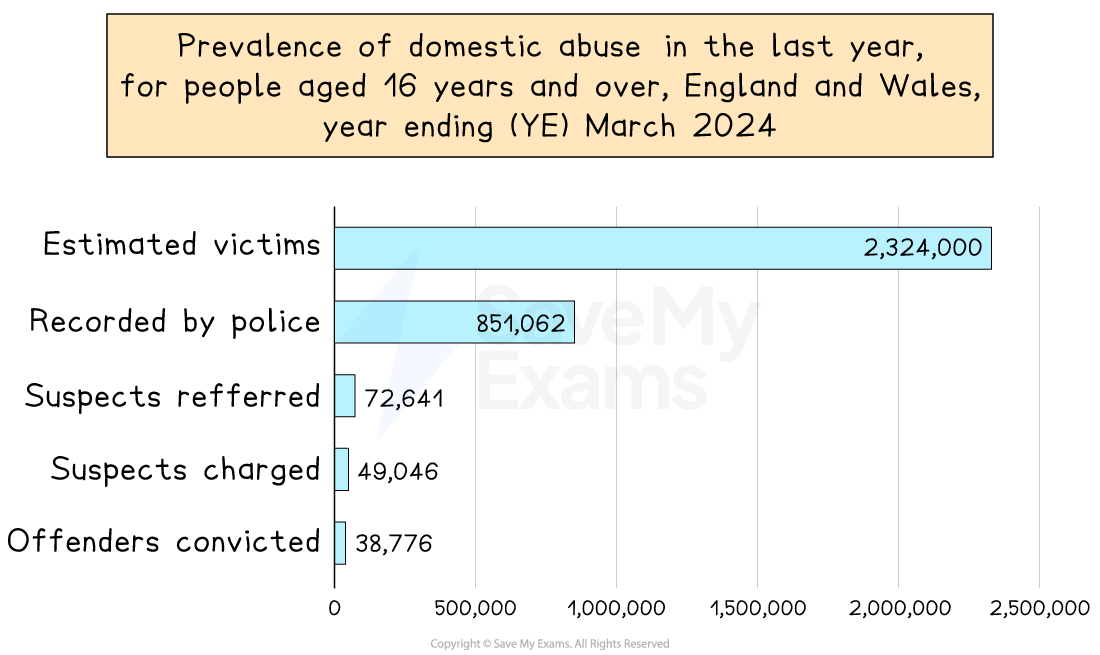Power & Decision-Making in Families (AQA A Level Sociology): Revision Note
Exam code: 7192
Sharing of resources
Inequalities often exist within households, both in who carries out domestic tasks and who benefits from the family’s income and resources
Barrett and McIntosh (1991) argue that:
Men receive far more from women’s unpaid domestic work than they offer in financial return
Financial support from men is often irregular and comes with conditions attached
Men typically control decisions on major purchases and spending
Money and resources, like food, are not distributed equally within families
Kempson (1994) found that in low-income households, women frequently prioritised their families’ needs, often going without or eating less to ensure their children were fed
Money management patterns
Feminist sociologists Pahl and Vogler (1993) identified two main systems of financial control:
Allowance system: Men give wives a set budget for household costs while retaining control over remaining income
Pooling system: Couples share their income and make spending decisions jointly
However, even pooling does not guarantee equality, as one partner (often the man) may still dominate financial decisions
Personal life perspective on money
The personal life perspective focuses on the meanings couples attach to money management, rather than assuming financial control always reflects power imbalance
Nyman (2003): The significance of money depends on how couples interpret who controls it
Vogler et al. (2006): Cohabiting couples are less likely to pool their income, often valuing financial independence
Weeks et al. (2001): Many couples pool money for shared bills but maintain separate accounts for personal spending
Smart (2007): Same-sex couples often view money management as reflecting equality and independence rather than control
Decision-making
Where pooled income is controlled by the husband, this tends to give men more power in major financial decisions
Edgell (1980): Men are more likely to make important financial decisions (e.g., property or car purchases), while women tend to handle day-to-day expenses (e.g., groceries).
Men’s higher earnings often give them more financial influence.
Laurie and Gershuny (2000): By 1995, 70% of couples reported an equal say in decisions, particularly where women were high earners or had professional careers.
Cultural and material factors
Crompton and Lyonette (2008) suggest that inequalities in financial decision-making arise from:
Cultural/ideological factors: Traditional gender roles teach men to dominate finances
Material factors: Men often earn more, giving them more control over household income
Domestic violence
Women's Aid (opens in a new tab)defines domestic abuse as:
'an incident or pattern of incidents of controlling, coercive, threatening, degrading and violent behaviour, including sexual violence, in the majority of cases by a partner or ex-partner, but also by a family member or carer'
Prevalence
The Crime Survey for England and Wales (2024) estimated that 2.3 million people aged 16+ experienced domestic abuse
Domestic violence (DV) does not occur randomly but follows social patterns, with men being the main perpetrators
Dobash and Dobash (1979) found DV often arises when men feel their authority is challenged (e.g., when wives question late arrivals home)
They argue marriage legitimises male power, creating female dependency and normalising violence
Gender gap
Most victims are women, though men also experience DV
In 2024, 1.6 million women and 712,000 men were victims of domestic abuse (CSEW)
Walby and Allen (2004) found women were far more likely than men to experience repeated abuse and sexual violence
Ansara and Hindin (2011) note that women are more likely to be fearful of their partners
Dar (2013) highlights that DV incidents are difficult to quantify, as abuse may be continuous rather than discrete
Issues with official statistics
DV is underreported and underrecorded due to:
Victims’ reluctance to report (fear of reprisals, seeing it as trivial, or believing police won’t act)
Police and prosecutors often view the family as a private sphere or as inherently 'good', ignoring its darker side
The assumption that individuals are free agents, e.g., women are 'free to leave', which downplays structural barriers

Explanations of domestic violence
Explanations of domestic violence are linked to Crompton and Lyonette's (2008) explanation of gender inequality:
The radical feminist explanation emphasises the role of patriarchal ideas, cultural values and institutions
The materialist explanation emphasises economic factors such as lack of resources
Radical feminist explanation
Millett (1970) and Firestone (1970) argue DV is rooted in patriarchy, with men using violence to control women
The family and marriage are viewed as key institutions of women’s oppression
Male domination of the state means DV is often ignored or poorly policed
Evaluation
Faith Robertson Elliot (1996) notes that not all men are violent, and women can also be perpetrators (including in lesbian relationships)
Radical feminists assume all women are equally at risk but fail to account for differences
E.g., young women aged 16–19, women with disabilities, separated/divorced women, those on low incomes, and single parents are more vulnerable (ONS 2024)
Materialist explanation
Wilkinson and Pickett (2010) link DV to social inequalities and financial stress rather than patriarchy alone
Families with lower incomes face higher stress levels, which can trigger conflict and violence
Those with less power, status, or wealth are at greater risk of abuse
Evaluation
Wilkinson and Pickett's approach helps to explain class differences in the statistics on DV
However, unlike the radical feminist approach, Wilkinson and Pickett do not explain why women, rather than men, are the main victims
Marxist feminists add that DV stems from capitalist exploitation, with male frustration from work taken out on women
This does not explain why not all men are violent, nor does it explain cases of female DV

Unlock more, it's free!
Did this page help you?